Big Data Space Solutions for Society: Highlights from the Event in Malta
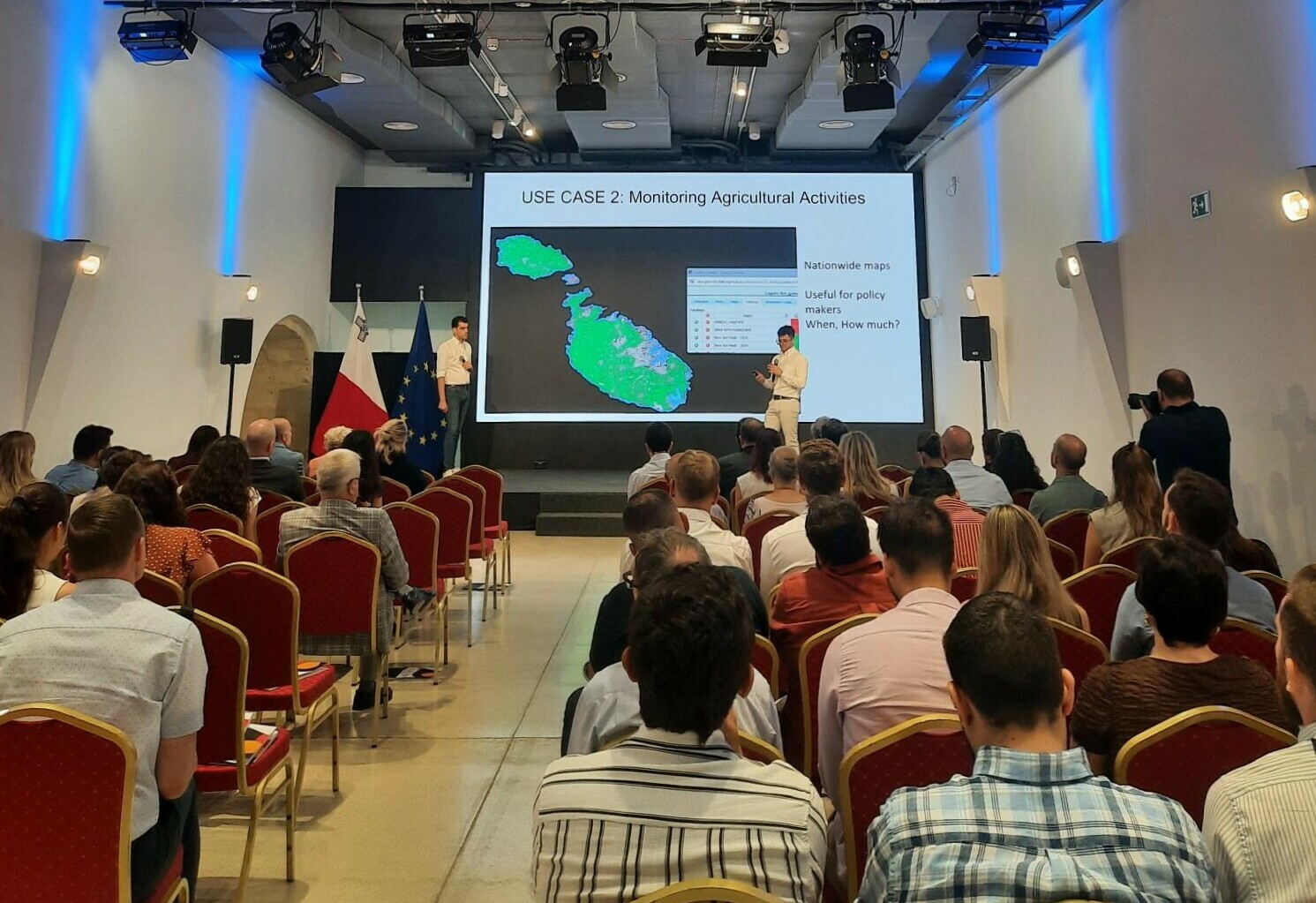
“Malta to become a living lab for data-driven innovation.” With these words, Silvio Scerri, CEO of Xjenza Malta, opened the two-day conference Big Data: Space Solutions for Society, held from 30th June to 1st July in Kalkara, Malta.
Jointly organised by Eurisy and Xjenza Malta, the event delved into the transformative power of space-based data, highlighting how the integration of satellite data with AI can enhance accessibility and generate actionable insights across multiple sectors.
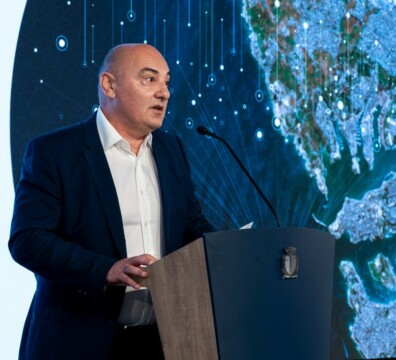
Mr. Scerri underscored the importance of making big data not only accessible but also interpretable, operational, and trustworthy. He emphasised the need for robust data infrastructure, interoperability, and capacity building in sectors such as maritime, agriculture, urban planning, and environmental protection, which are particularly relevant, not only in Malta, but across Europe and beyond.
The event served as both an awareness-raising and educational platform, bringing together local and international experts to discuss real-world applications and the latest developments in the field. A key highlight was the presentation of findings from a requirements-gathering study on the use of satellite data within the Maltese public sector, which was carried out in 2024 by Xjenza Malta and was also supported by Eurisy. The study provides valuable insights into the current landscape, revealing a significant adoption of satellite data and the dependence of certain Maltese public authorities on this resource. It also underscored key challenges, particularly those arising from limited interdepartmental communication and collaboration, and the need for targeted education and training.
Michael Quinton (Xjenza Malta) stressed the urgent need to bridge gaps not only between public and private sectors but also within public institutions themselves. In this way the idea of a unified data ecosystem in Malta could take shape, to break down silos, enhance interdepartmental cooperation and democratise access to data.
This spirit of collaboration and forward-thinking was the driving force behind the event, which saw strong participation from local public authorities and entities.
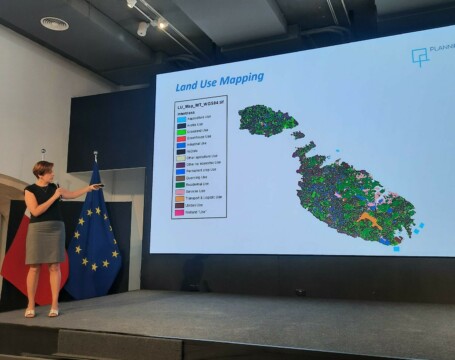 The first day of the workshop focused on national applications, including case studies demonstrating how Earth Observation technologies are being integrated into areas such as agriculture, urban planning, and land use.
The first day of the workshop focused on national applications, including case studies demonstrating how Earth Observation technologies are being integrated into areas such as agriculture, urban planning, and land use. 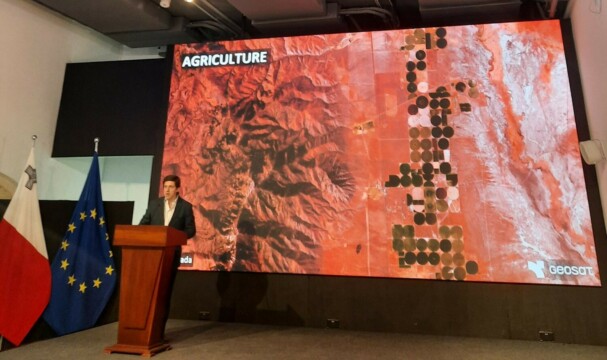 Local researchers and startups presented how they are using artificial intelligence and data platforms to convert space data into actionable insights. Francisco Vilhena da Cunha, CEO of GeoSat, also showcased how high-resolution Earth Observation data is delivering significant value to both the public and private sectors presenting use cases in Malta.
Local researchers and startups presented how they are using artificial intelligence and data platforms to convert space data into actionable insights. Francisco Vilhena da Cunha, CEO of GeoSat, also showcased how high-resolution Earth Observation data is delivering significant value to both the public and private sectors presenting use cases in Malta.
The second day, dedicated to European expertise, examined the market dynamics of space applications, with Emmanuel Pajot presenting findings from the latest EARSC industry survey. The data revealed a 10.7% growth rate over the past five years, driven largely by geopolitical conflicts and a growing emphasis on defence. The public sector has emerged as the primary customer in this evolving market. In such an ecosystem, fostering strong user engagement is essential—particularly to enable the development of innovative commercial data solutions. These solutions, often powered by AI, have the potential to enhance usability, support both providers and users, and also reduce overall costs, as highlighted by Graham Turnock, Secretary General of Eurisy.
The second day also featured presentations from experts from the companies Terradue, Oikon, and the University of Malta. The applications presented covered topics such as sustainable development, maritime monitoring, and urban planning. Professor Charles Galdies (University of Malta) shared his research on how AI and satellite data are being applied to estimate ocean chemistry and support environmental and climate efforts.
A panel featuring representatives from space agencies brought the two-day conference to a close, sparking lively discussions and highlighting key takeaways shared by both experts and attendees.
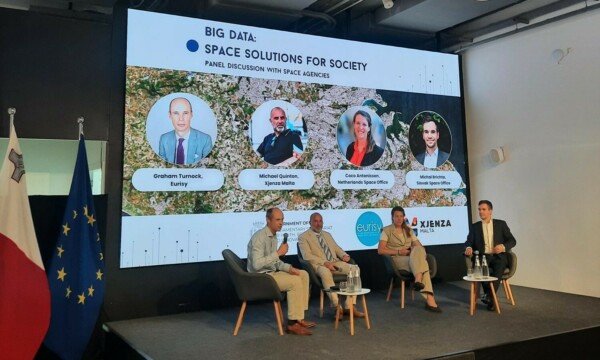
From left to right: Dr. Graham Turnock, Eurisy; Dr. Michael Quinton, Xjenza Malta; Coco Antonissen, Netherlands Space Office; Michal Brichta, Slovak Space Office.
How much of a difference will AI really make in the space data sector?
While AI holds immense promise, we must move beyond the buzzword.
Critical thinking around AI techniques and their applications is essential. Understanding what kind of AI is being used, why, and how is key.
-Government Hesitation
Some government sectors remain hesitant to fully embrace AI-generated data. However, increasing transparency and clarity around AI outputs could shift that perspective.
-Need for Standardisation
Without clear standards, collaboration and trust become challenging. Establishing standards is key to enabling scalable AI applications, not just in space but across all industries.
-Trustworthiness of Data
As new markets emerge around data integrity, ensuring the trustworthiness of AI-generated insights is also becoming a top priority.
-Education and Collaboration
Two key actions that will play a big role in shaping the future of AI in the space sector.
Check out some of the speakers’ presentation materials:
Requirements Gathering Exercise – The Use of Satellite data in the Maltese Public Sector (Dr Michael Quinton, Xjenza Malta)1 Requirements Gathering Presentation 30th June 2025_EURISY event
Empowering Farmers: CAP Support From Space– Johan Zammit Smart Studios, Emanuel Azzopardi, Agriculture and Rural Payments Agency 2 Empowering Farmers_ARPA – Smart Studios – June 2025
AI4EO: harnessing AI techniques and models to enhance remote sensing data – Gianluca Valentino, Semablu 4 Harnessing AI Techniques and Models_SemaBlu
Unifying Big Data Workflows for Earth Observation Using Apache Wayang – Alexander Alten, Scalytics5 Unifying Big Data Workflows for Earth Observation Using Apache Wayang – Scalytics – Alexander Alten
EO Sectors perspectives and opportunities, Emmanuel Pajot, EARSC 1 EARSC 2025 EO opportunities
Supporting application builders in Earth sciences – Pedro Pereira Gonçalves, Terradue, Italy 3 Supporting application builders in Earth sciences_Terradue
Earth Observation in service of Nature Protection and Sustainable Development – Dr Ivan Tekic, Oikon, Croatia 4 Oikon_Eurisy_Malta_conference_2
Big Data Meets Ocean Health: AI-Driven Estimation of Ocean Carbonate Chemistry from Earth Observation – Professor Charles Galdies, University of Malta5 BIG DATA MEETS OCEAN HEALTH_Prof. Charles Galdies
